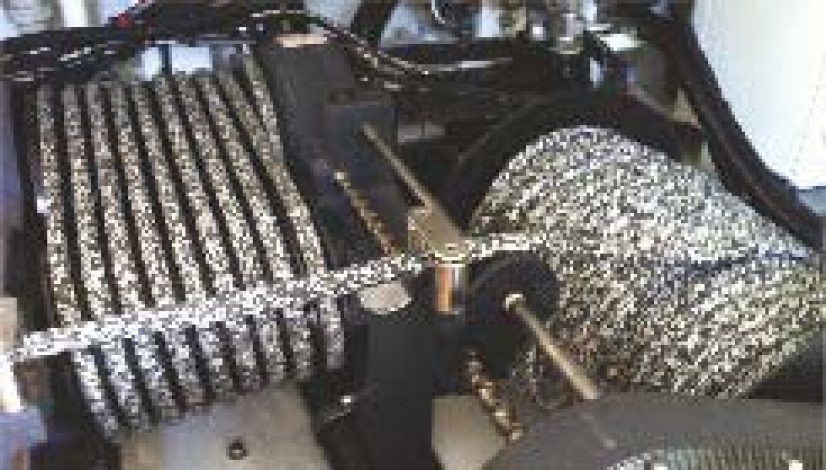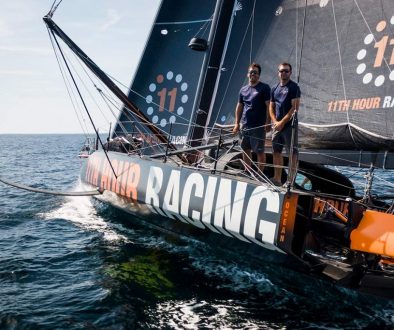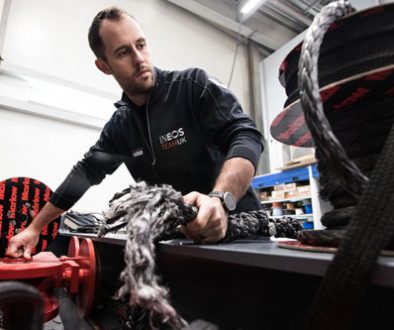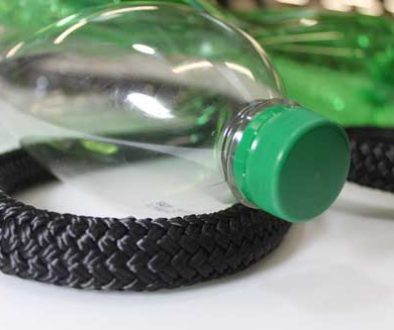Marlow takes the heat out of superyacht running rigging
Ropes manufactured using UHMPE such as Dyneema®, have been widely accepted in grand prix yacht racing and sailing superyachts for many years now. The strength, weight and elongation benefits of Dyneema® is widely known and understood, however as loads increase through larger and more powerful boats, the demands on the ropes grow ever higher. Nowhere is this more keenly seen than with superyacht running rigging.
Counteracting forces and frequent cyclic bending from superyacht captive winches can have serious implication for the ropes. Cover slip resulting in excess and baggy cover damages ropes as well as hampering the smooth running of the winches and heat generated through internal and external forces can have serious implications on rope integrity. In addition, very high loads demanded by the enormous power generated and the necessarily high factors of safety can often be at odds with rope diameter limitations from winches and deck gear.
Our Engineering Teams developed Oceanus, specifically to tackle these challenges. Oceanus uses Dyneema SK99 within a special low-stretch core construction to maximise strength by diameter without compromising flexibility. The cores are specially coated to improve core / cover interaction and eliminate coverslip. A Dyneema® and Technora® blended cover provides the right compromise of grip and abrasion resistance to ensure smooth and efficient running on and off the winches and through pre-feeders. Finally a machine finished factory splice improves splice strength and aesthetics whilst helping to minimise diameter increase at the neck and along the tail.
The result is a diameter specific, high strength, abrasion and heat resistant rope designed specifically to work seamlessly with modern captive winches. The Oceanus captive winch rope range starts at 24mm goes as up to 80mm diameter and an average break load of 464 tonnes when specified with Dyneema SK99.
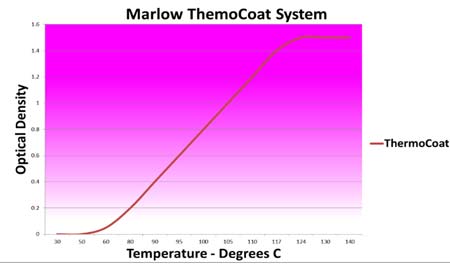 However, that isn’t the whole story. The ability to protect a Dyneema load-bearing core with blended heat resistant covers is well documented – a path forged by Marlow’s Grand Prix Series. However, the effect of internal heat generation within a rigging system remain less well documented, but no less fundamental to a ropes performance and longevity. Internal heat build-up in a rope can be caused through a number of factors such as elongation, yarn on yarn friction and cyclic bending. Add these factors to the high loads and hot captive winch rooms on modern superyachts and you can have a recipe for premature rope failure.
However, that isn’t the whole story. The ability to protect a Dyneema load-bearing core with blended heat resistant covers is well documented – a path forged by Marlow’s Grand Prix Series. However, the effect of internal heat generation within a rigging system remain less well documented, but no less fundamental to a ropes performance and longevity. Internal heat build-up in a rope can be caused through a number of factors such as elongation, yarn on yarn friction and cyclic bending. Add these factors to the high loads and hot captive winch rooms on modern superyachts and you can have a recipe for premature rope failure.
Naturally, Marlow’s Oceanus provides a number of options to counteract these factors. Key amongst these is the use of Marlow’s own proprietary SiliconCoat which can be applied to SK99 yarn during manufacture to reduce internal heat build-up within the load-bearing Dyneema core. DSM Dyneema®’s ICO-DYN 10 performs a similar function and in addition DSM also produce XBO® versions of their SK75 and SK78 yarns which also help to limit internal heat generation.
Whilst the coatings detailed above are able to reduce heat build-up or limit its effects on the fibre, heat generation can still occur and has the potential to cause permanent and irrevocable damage if un-recognised or poorly managed. Prolonged exposure to temperatures over 80°C (176°F) will alter the crystalline structure of UHMPE fibre at a molecular level, permanently reducing the strength of the rope without any visible indication of damage. Elevated temperatures can also significantly increase the rate of creep experienced by the rope.
With this in mind, and in an attempt to offer riggers, project managers and captains tools to monitor and manage the invisible damage caused through heat generation, Marlow’s technical team developed ThermoCoat.
Marlow’s ThermoCoat System provides an easy and accurate method of inspection and investigation criteria for remedial action and is incorporated into the core of Oceanus. The Patent pending technology provides a visible indicator that not only signals when a rope has been exposed to excessive heat, but also provides a simple scale to indicate the degree of exposure that has occurred.
Retired superyacht ropes are often returned to the factory for inspection and residual testing. Now a simple visual inspection can identify potentially harmful heat exposure and the intensity of that exposure, at which point further investigation can take place to determine how to proceed. Factors such as time of exposure, percentage of load, working conditions and condition of rope can be used to determine how the heat build up may have occurred within the system, whether or not the retirement schedule is valid, or indeed whether procedural or system change is needed.
It is intended that that this new generation of ‘smart ropes’ will allow the operators of high powered sailing superyachts and mega-sloops to better understand and react to the potential damaging effect of heat on larger ropes. This will result in increased safety and reliability.
For more information Marlow Oceanus and ThermoCoat or any of the concepts discussed above, please contact Marlow Ropes’ technical department – technical@marlowropes.com or +44 (0)1323 444 444

